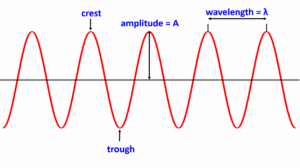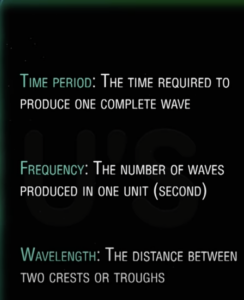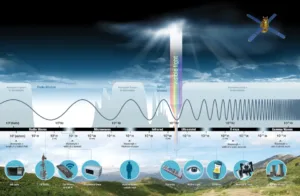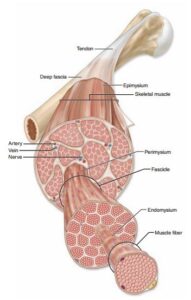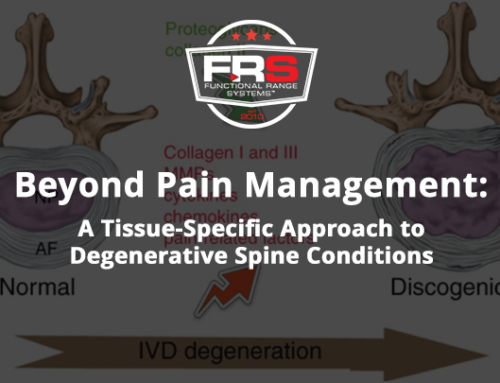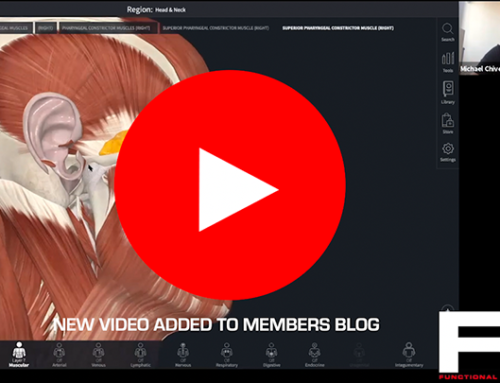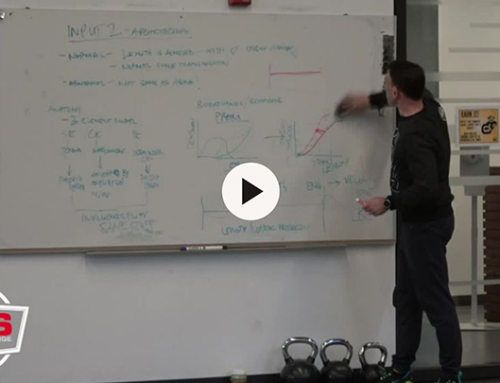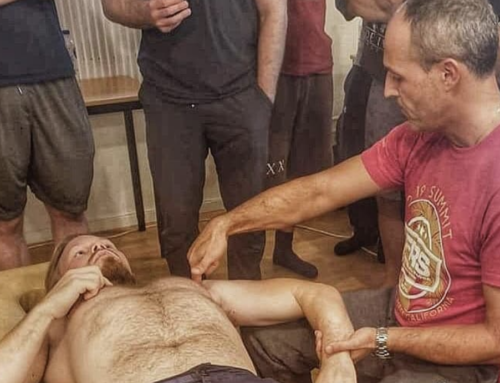Isometrics, Low Frequency Waves and the Electromagnitic Similarities in Signaling.
By Alex Nichols, FRS Instructor
Strength Coach/Manual Therapist
There has been extensive reference to the multiple uses of isometrics in training and treating the musculoskeletal system at FRS®. One of the primary vectors with which isometrics can be used to preferentially load joint and connective tissue structures has to do with the force profile of isometric contractions. Specifically, low level isometrics and how those are best suited for building tissue specific capacities like connective tissue architecture as outlined in the FRS ISM®. Force is a vector quantity, meaning it has magnitude and direction. When it comes to using isometrics to train tissues in anatomy, we can bucket magnitude into low, moderate, and high contractions. Remember force can be a scalar quantity (magnitude only) and a vector quantity (magnitude and direction). Because anatomy has direction to it, we consider training from a vector quantity perspective. In appreciating how deeper tissues in anatomy can be isometrically engaged using the thought process at FRS® the value of low level isometrics cannot be understated.
Drawing from the thought process behind how and when low level isometrics are appropriate in FRS® courses, there are similarities in both concept and application to how low frequency sound waves function in fields like geophysics. Low frequency sound waves travel farther than high frequency sound waves because they have longer wavelengths, and are less susceptible to attenuation. Attenuation can be thought of as the factors affecting a frequency in terms of how energy is absorbed, conducted, and scattered. In other words, does it penetrate to the intended target or not?
Low and ultra low frequencies are used in electromagnetics to probe 10’s of kilometers below the earth’s crust to the upper mantle. Specifically, between 3 Hz and 300 Hz, and ULF (Ultra Low Frequency) from 300 Hz to 3 kHz, both ranges can penetrate the earth and sea. The penetration-depth relationship with lower frequencies is known as the skin depth (no pun intended here these are the terms used in geophysics) which is where roughly 1/3 of the original energy at the surface remains. Lowering the frequency allows for greater skin depth. The absorption of the energy is also known as opacity, or the impenetrability of rock to certain electromagnetic frequencies. You can think of this as different layers of dirt and rock have different electrical conductivity. The advantage of low frequency waves is their ability to navigate through/around interference, whereas higher frequency waves are more susceptible to be interfered with, or encounter opacity.
To better understand what high and low frequencies are, and to appreciate how this similarity can be conceptualized in sending specific signals to deeper anatomy with isometrics, we need to briefly review the ‘anatomy’ of a wavelength. The basics of sound waves can be summarized as a crest (high point) and trough (low point) along with the distance between each crest/crest or trough/trough. The crest to crest or trough to trough is going to be equal in subsequent wavelengths. Thus, either of these is used to define a wavelength (distance).
A frequency is the number of waves produced in a unit of time (second) (or how many crests/troughs occur in one unit of time). If there are 5 waves in 1 second, your frequency is now 5.
In FR®, we discuss how and when to constrain treatment inputs to utilize low level isometrics for long durations of time. This allows, among other things, for tissue specific signaling at deeper connective tissue levels. This is one of many features inherent to isometrics. You can think of this like constraining low level frequencies, longer wavelengths, over longer durations of time, to penetrate the intended bioflow target. In through-the-earth signaling, there is a lot of rock and dirt to consider when trying to ‘look’ hundreds of miles below the surface. The field of geophysics has capitalized on the properties of electromagnetism and how to use ultra low frequencies to penetrate rock strata. This has allowed for numerous breakthroughs in how to engineer various instruments to measure and analyze things like compositions of certain rocks, minerals, conductivity, etc that come with studying earth sciences. Ultra low frequencies are an important component of how regions are mapped, studied, and monitored. High frequency waves tend to be more directional and thus, have a higher degree of scatter to them as mentioned earlier. This opacity, or the impenetrability of rock to certain electromagnetic frequencies, is determined by the interference potential of different layers of dirt and rock. Low frequency waves have a superior ability to navigate through/around interference.
Without getting too much into the physics of attenuation which has to do with the relationship between absorbed and reflected energy in the physical world, FRS® principles can be embraced similarly in how we utilize isometrics to signal deeper tissue specific adaptations.
Simply put, if we want to maximize the concentration of force to specific structures without suffering higher losses of energy dissipating elsewhere (due to electromagnetic frequency attenuation or a ‘noisy signal’), isometrics and the constraints FRS® has outlined for eliciting specific adaptations is effective because of the parallels in logic for maximizing signals to deeper structures (and minimizing signal noise/signal receptivity).
Remember that isometrics are NOT one thing. They are scalable (in this oversimplified example): low, moderate, high. Due to the structure of cells and the electromagnetic properties of cellular behavior in mechanotransduction (cell to cell signaling), the conversion of a mechanical input into an electrical output (peizoelectricity), the deformation of cells under load over time (thixotropy), and the directionality of anatomy (ansiotropy), the ability to signal to deeper anatomy is only possible through scaling properties of force in isometric training.
If you imagine all of the anatomy that force has to travel through in a musculoskeletal system, the potential to access deeper tissue (assuming no neurological issues/upper motor neuron lesions are present) draws parallels from the physics of low frequency radio waves.
To steal an example from a geophysicist I had this discussion with, if you think of a pile of jello for a moment, imagine shaking it violently at a very high frequency/velocity. A majority of what will shake is the top. If you imagine now slowly loading the plate which the jelly is on, then starting to wiggle it side to side, at a lower frequency, you will get more of that movement into the base of the jelly versus the top (deep versus superficial anatomy).
Think of this process exactly the same when it comes to contracting a tissue very quickly, there isn’t enough loading time nor specificity for connective tissue structures to be specifically trained. Due to what mechanobiology tells us about cellular/tissue behavior, it becomes clear where general exercises miss the loading potential and specificity offered by direction specific isometrics. As the FRS ISM® has outlined, how you load muscular tissue specifically is not the same as how you load connective tissue. While secondary training no doubt will happen at the deeper connective and joint tissue levels during general exercises, this is not the same as intentional isometric training. This has everything to do with the use and scalability of isometrics. Similar to how low frequency radio waves are are primary vehicle to travel deeper and further to map, monitor, and study earth and ocean sciences, you can imagine how FRS® has outlined the use of isometrics to elicit specific signals from deeper musculoskeletal structures.
References:
Damiano NW, Yan L, Whisner B, Zhou C. Simulation and Measurement of Through-the-Earth, Extremely Low-Frequency Signals Using Copper-Clad Steel Ground Rods. IEEE Trans Ind Appl. 2017 Sept-Oct;53(5):5088-5095. doi: 10.1109/TIA.2017.2703625. Epub 2017 May 11. PMID: 29176916; PMCID: PMC5701283.
Kubo K, Kanehisa H, Fukunaga T. Effects of different duration isometric contractions on tendon elasticity in human quadriceps muscles. J Physiol. 2001 Oct 15;536(Pt 2):649-55. doi: 10.1111/j.1469-7793.2001.0649c.xd. PMID: 11600697; PMCID: PMC2278867.
Sun G, Li J, Zhou W, Hoyle RG, Zhao Y. Electromagnetic interactions in regulations of cell behaviors and morphogenesis. Front Cell Dev Biol. 2022 Oct 19;10:1014030. doi: 10.3389/fcell.2022.1014030. PMID: 36340041; PMCID: PMC9627210.
